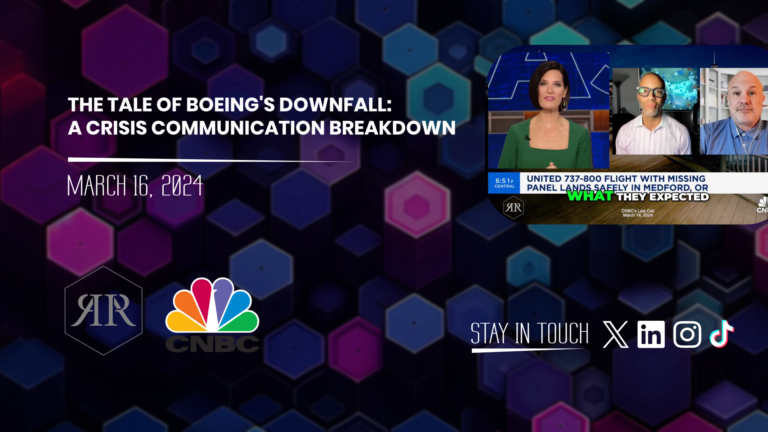In my exploration of crisis communication strategies and their critical role in maintaining a brand’s integrity, the saga of Boeing presents a particularly illuminating case study. The narrative surrounding Boeing’s crisis communication—or, more accurately, the lack thereof—underscores the precariousness of brand reputation management in the face of adversity. The Boeing crisis communication debacle serves as a cautionary tale, emphasizing the necessity of adept narrative control and timely, empathetic responses in mitigating brand crises.
Narrative Control During Brand Crisis
In crisis communication, I’ve come to understand the paramount importance of narrative control. The unfolding of Boeing’s crisis serves as a stark testament to this principle. The ability to swiftly and effectively shape the narrative around a crisis not only dictates the public’s perception but can significantly alter the course of the brand’s future. Boeing’s faltering steps in managing its narrative precipitated a decline in public trust and brand integrity, illuminating the critical role of narrative control in crisis communication.
In the wake of the tragedies involving Boeing’s 737 MAX aircraft, the company was presented with a critical juncture—to seize control of the narrative or allow it to be shaped by external forces. Regrettably, Boeing’s response was marked by a glaring deficit in empathy and a conspicuous delay in addressing the public’s burgeoning concerns. This strategic oversight provided fertile ground for alternative narratives to flourish, narratives that were not kind to Boeing, casting it not as a problem-solver but as a principal antagonist in the crisis. Boeing’s stock price dropped by 18.9% after the Alaska Airlines incident, wiping out over $28 billion of the company’s market value.
The essence of effective crisis communication lies not just in the dissemination of facts but in the crafting of a story that resonates with the public. A story that acknowledges the victims, accepts responsibility, and outlines a path forward. However, Boeing’s initial reticence and seeming indifference allowed a more sinister narrative to take hold—one where Boeing appeared indifferent to the gravity of the incidents and the resulting human cost. This failure to communicate effectively, to assume the role of the hero in the unfolding drama, left a void swiftly filled by detractors and critics.
The potency of narrative in shaping public perception cannot be underestimated. Humans are innately drawn to stories; we seek heroes to admire, villains to decry, and victims to sympathize with. By neglecting to actively participate in the narrative surrounding the crisis, Boeing inadvertently positioned itself as the villain in a globally watched drama. This positioning was not merely a matter of public relations inconvenience; it was a strategic failure with profound implications. The compelling, albeit tragic, stories that emerged captivated the global audience, weaving a narrative tapestry that was decidedly unfavorable to Boeing.
This miscalculation underscored a crucial lesson in crisis communication: the narrative void will be filled, with or without the involvement of the implicated party. The choice lies in whether to lead the narrative, offering transparency, empathy, and solutions, or to cede control, allowing others to define the crisis and its villains. Boeing’s experience illustrates the dangers of the latter approach, highlighting the necessity of proactive narrative management.






